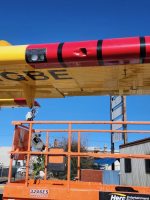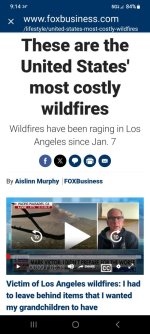No politics, please, when discussing the topic of California wildfires.
As some of you know, in 2023 I moved back to my childhood hometown of Santa Rosa, CA after being away for 40 years, to be closer to my Dad and siblings. In 2017, this community of about 175,000 people experienced the Tubbs fire, a wildfire that destroyed over 5,600 structures, including 2,800 homes and killing at least 22 people. The fire started miles away, sparked by utility company equipment during 50+ mph winds, and tore through the hillsides into Santa Rosa in the middle of the night. Wind-blown embers spread the fire miles ahead of the active fire zone. When an ember landed on anything flammable, it burned. Wooden shingle roofs, combustible vegetation near a home's foundation, attic and subfloor vents that allowed burning embers into these spaces, patio decks and the spaces underneath them, wooden and vinyl fences...anything that can burn caught fire. Every home on the street I now live on, including the one that was on the lot that I now own, burned to the ground. It's been 7 years since the fire, homes are still being rebuilt even now--I can see at least 6 under construction out my back window--and we still have empty lots around us with nothing but burned-out foundations...there's one right across the street from my house. The fire was so intense that it ran down the hill and blew across the freeway, destroying 1,300 homes in a completely different neighborhood.
Just to give you a sense of the speed of these fires, the Tubbs fire spread 1 mile from its origin in the first 45 minutes and another 3.5 miles in the next 30 minutes. Ultimately, the fire travelled 12 miles in the first three hours. And the winds were about 50 mph, not the 60, 70, 80, 90 mph gusts occuring in Southern California. When winds are blowing fire like a blow torch, there's no amount of water or firefighters or firefighting apparatus or fire lines to fight these kinds of fires. Only preparation in advance gives you any chance at all of surviving, and even then there's no guarantee.
The area of the Tubbs fire in Santa Rosa has burned several times in years past, notably in 1908, 1939, and 1964 before burning yet again in 2017. The big difference is that over the years, thousands of homes have been built in areas that were previously open land. Jam a bunch of homes together, build them without regard to fire safety, surround them with flammable vegetation, and then expect the usual firefighting infrastructure to protect you and you've got a recipe for disaster.
This is what's happening in Southern California. People want to bloviate about water supply and reservoirs and more firefighting resources, etc. but if you look at the satellite photos of these burned-out neighborhoods, you can see they never had a chance. The homes are jammed together. Many are old and not built to resist wildfires. Most are not prepared for wildfire because no one thought it was coming to their neighborhood. People living many miles away from the traditional wildfire zones assume they are safe when they are not because of those blowing embers. You've probably seen photos of homes and buildings right on the edge of the Pacific Ocean that burned down, far away from traditional fire zones, where the inland winds blew embers out toward the beaches.
We've also got this phenomenon now where we have a very wet winter, everything grows like crazy, followed by drought and vegetation that is tinder dry and ready to burn. In the Pasadena area where the Altadena fire is burning, average annual rainfall is 20.4". Current season's rain total is something like 0.06"--not even 1/10 of an inch! The only reason we're not worried about wildfires here in Santa Rosa right now is because we had over 19" of rain in November/December alone!
It will take a decade and more for Southern California to recover. Homes will be rebuilt on the same lots but to higher fire standards. People will get serious for a while about maintaining a safe, defensible space around their home. Generators will be installed to ensure that firefighting water continues to flow when power goes out. But then memories fade, people fall back into old habits, other priorities pop up, and we let down our guard. Yes, what's rebuilt will be better and safer, but as we know, history seems to repeat itself. I already see homes in my neighborhood where defensible spaces are not being maintained, and it's only been 7 years since the homes burned down! And one of the ironies is that you can do everything in your power to prepare your own home, but if your neighbor does not, they are endangering your home by their lack of action.
And as I sit here thinking about how to end this way-too-long post, my mind wanders to the 9.0 magnitude earthquake that will inevitably devastate parts of California, the increase in deadly hurricanes on the East Coast, the deadly floods in the Midwest and South, the devastating droughts in various parts of the country.
Buckle up, folks. It's going to be a bumpy ride.
Yeah.
I'm reminded of what Mr. Rogers said:
"“When I was a boy and I would see scary things in the news, my mother would say to me, "Look for the helpers. You will always find people who are helping.”
Now I have to decide...what am I going to do? How am I going to help?
How are you going to help?
I think I'm going to have a good cry, then wash my face and decide what to do next.



